Key takeaways:
- Understanding the difference between proofreading and editing is essential for setting client expectations and building trust.
- A well-curated portfolio showcases versatility and skill, instilling confidence in potential clients.
- Organizing portfolio samples by genre and including clear descriptions enhances client navigation and personalization.
- Client testimonials, particularly when diverse and visually engaging, can significantly broaden appeal and attract new opportunities.
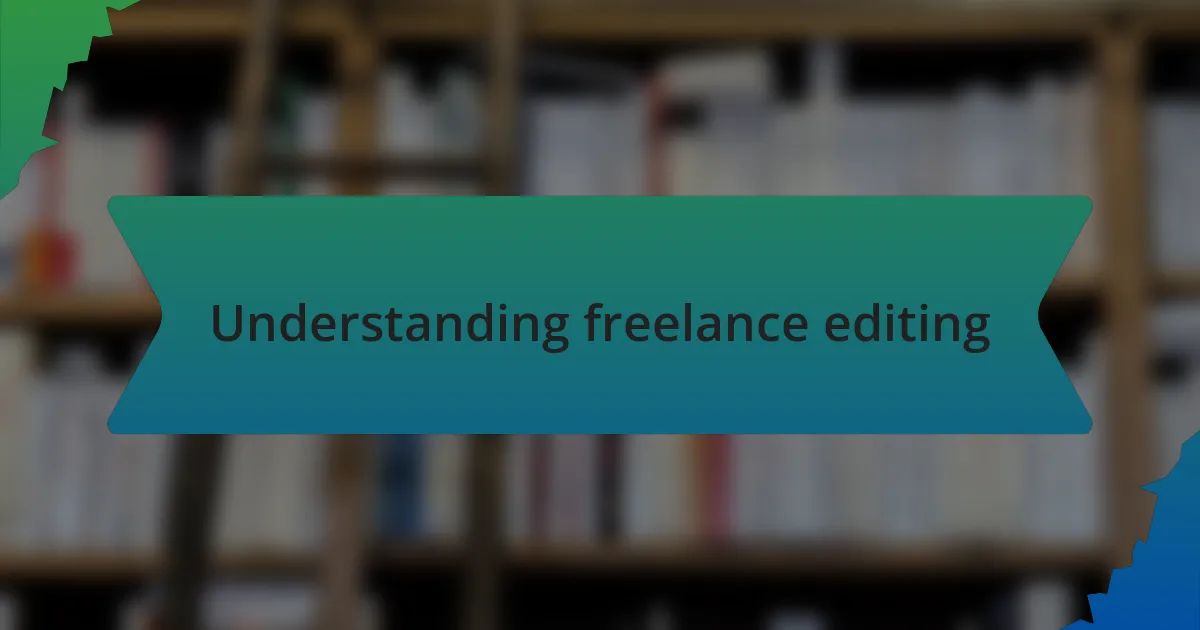
Understanding freelance editing
Freelance editing is a unique blend of creativity and precision. I still remember my first projects, where I had to balance preserving an author’s voice while tightening the narrative. It was a delicate dance, but every time I made a suggestion that resonated with the writer, the thrill of collaboration was undeniable.
Many newcomers might wonder about the difference between proofreading and editing. Let me share a moment that made it clear for me: I once worked on a manuscript where I focused solely on enhancing the flow of ideas, but my client thought it was merely proofreading. It dawned on me that understanding these distinctions is crucial for setting expectations and building trust with clients.
The beauty of freelance editing lies in its flexibility and variety. I cherish the freedom to work with authors from diverse backgrounds, tackling genres I love. Have you ever considered how many stories remain untold simply because they didn’t receive the right editing? That thought motivates me every day to hone my craft and strive for clarity in every piece I encounter.
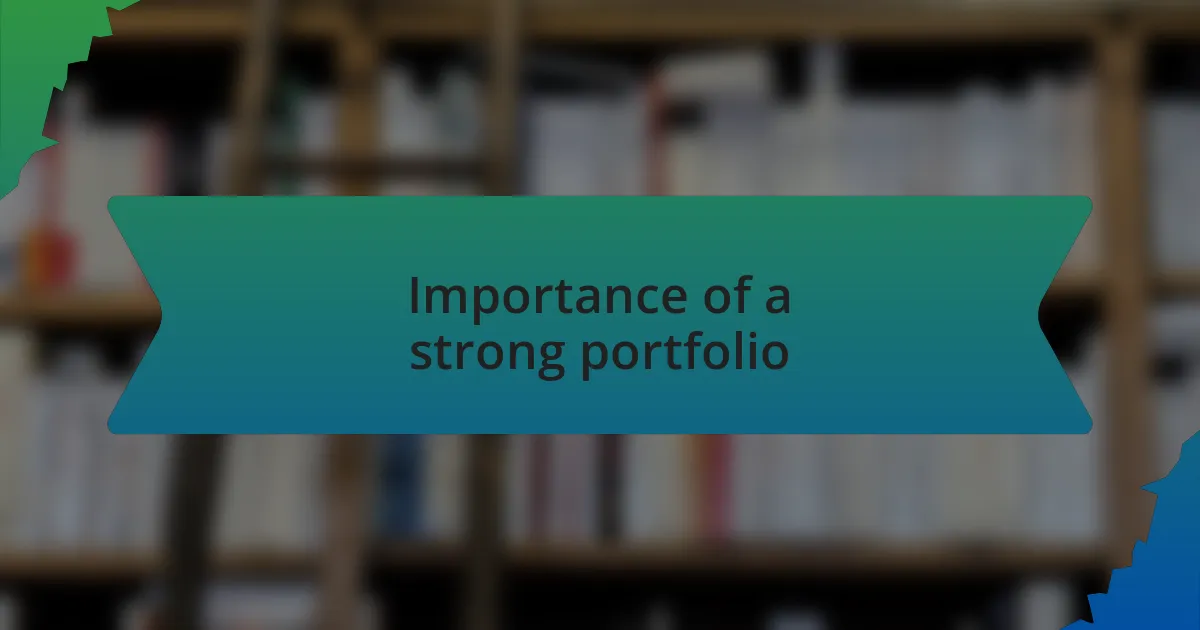
Importance of a strong portfolio
A strong portfolio is like a calling card in the freelance editing world. When I first put mine together, I carefully selected pieces that showcased my range—proofreading, developmental editing, and everything in between. Each project told a story of collaboration and growth, proving to potential clients that I could adapt to their unique needs and elevate their work.
I still remember the moment I landed a significant client after they browsed through my portfolio. They were particularly drawn to an article I edited that transformed a complex idea into a compelling narrative. This experience underscored a critical truth: a well-curated portfolio not only demonstrates my skills but also instills confidence in clients. They want to see your best work and envision what you could achieve together.
It’s fascinating to think about how many opportunities a solid portfolio can generate. Have you ever considered how a single document can open doors to new projects and relationships? For me, each portfolio update was a step toward broader professional recognition—a reminder that my editing journey is ongoing, and my best work is always a piece away.
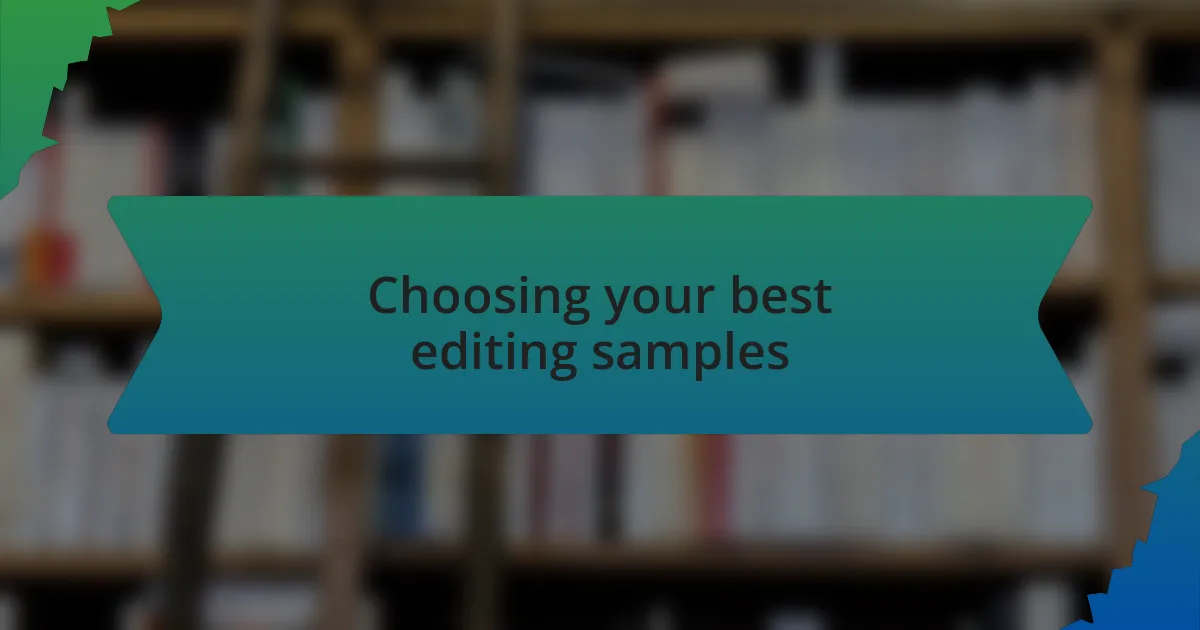
Choosing your best editing samples
When choosing your best editing samples, I recommend starting with projects that truly resonate with you. I recall picking a challenging manuscript where I had to completely restructure the narrative flow; the final result not only enhanced the clarity of the content but also highlighted my attention to detail. This piece is a testament to my editing philosophy: it’s not just about correcting errors, but about refining a voice and delivering a polished final product.
Think about the type of projects that showcase your strengths, whether it’s a gripping novel or an academic paper. For me, including a sample from a self-published author I worked with was pivotal. Their gratitude for helping shape their vision and the positive impact on their readers made me realize that my editing can transform lives. It’s essential to choose samples that evoke that same emotion and connection for your prospective clients.
As you sift through your past work, ask yourself: which samples not only demonstrate my skills but also tell a story? Perhaps it’s a piece that challenged you or one that received glowing feedback. I remember the pride I felt after receiving a heartfelt thank-you note from an author; that personal connection made that project a must-have in my portfolio. Ultimately, your selected samples should inspire trust in your potential clients, assuring them that they are in good hands.

Structuring your portfolio effectively
When structuring your portfolio, organization plays a crucial role. I find that grouping my samples by genre or project type not only makes navigation easier but also allows clients to quickly identify the style that best fits their needs. In my experience, when I segmented my work into categories, I noticed a significant uptick in inquiries—clients appreciated the ease of finding the right example.
It’s also essential to include a brief description for each sample, explaining the context and your specific role in the editing process. I remember adding a couple of sentences about a particularly complex manuscript where I worked closely with the author to develop their ideas further. This upfront clarity helped potential clients see not just what I did, but how I approached challenges, making my portfolio feel more personal and relatable.
Finally, consider incorporating a few testimonials alongside your work. These endorsements can evoke trust, and I can assure you they add a powerful touch. One of my clients once described me as a “transformative force” in their writing, which resonated with future clients as they browsed my portfolio. Such insights not only reinforce my capabilities but also spark curiosity— doesn’t everyone want to work with someone who can truly elevate their writing?
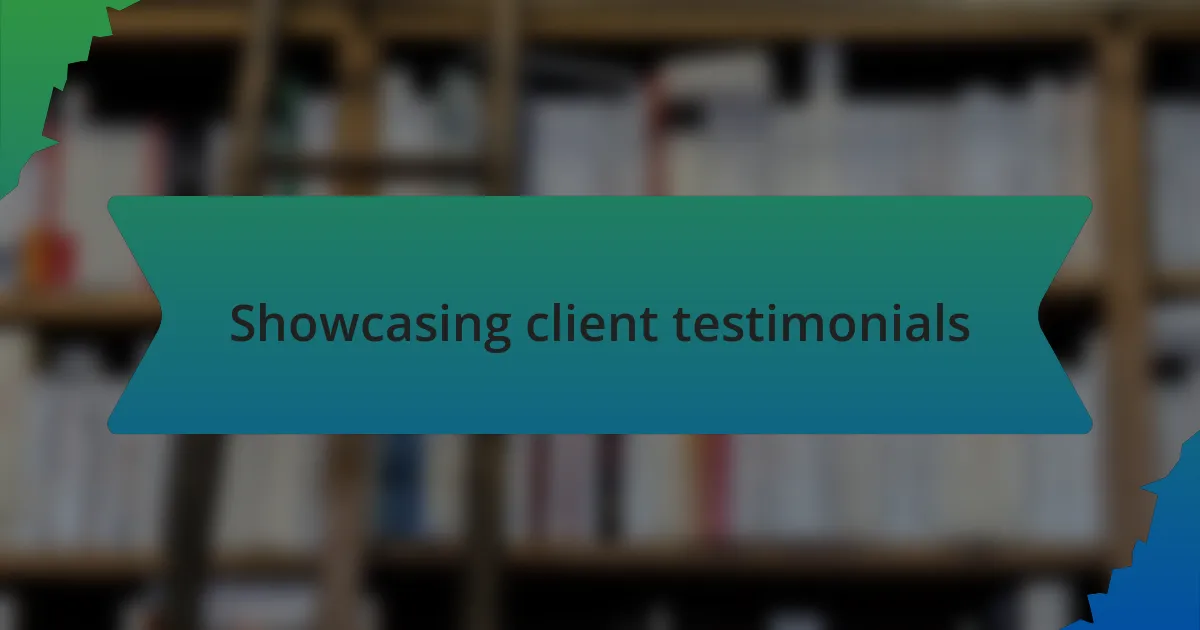
Showcasing client testimonials
A pivotal aspect of showcasing client testimonials is their authenticity. I recall a time when a client shared that my edits not only improved the clarity of their manuscript but also helped them regain confidence in their voice. Hearing such feedback reinforced my belief in the transformative power of editing. Isn’t it fascinating how words can change the way we perceive our own narratives?
Including diverse testimonials can also broaden your appeal. I once included a few quotes from various genres—fiction, non-fiction, and academic work. As a result, I noticed a potential client reach out simply because they saw that I had effectively collaborated with authors from different backgrounds. It made me realize that showcasing versatility through client feedback can truly help attract a wider audience.
Don’t underestimate the visual aspect of your testimonials. Presenting them in eye-catching graphics or dedicating an entire section of your portfolio to highlight these endorsements adds flair. I experimented with bolding key phrases that really struck a chord, like when a client referred to my editing process as “collaborative magic.” This format not only made it easier to digest but also sparked a curiosity—what kind of magic could I bring to their project?
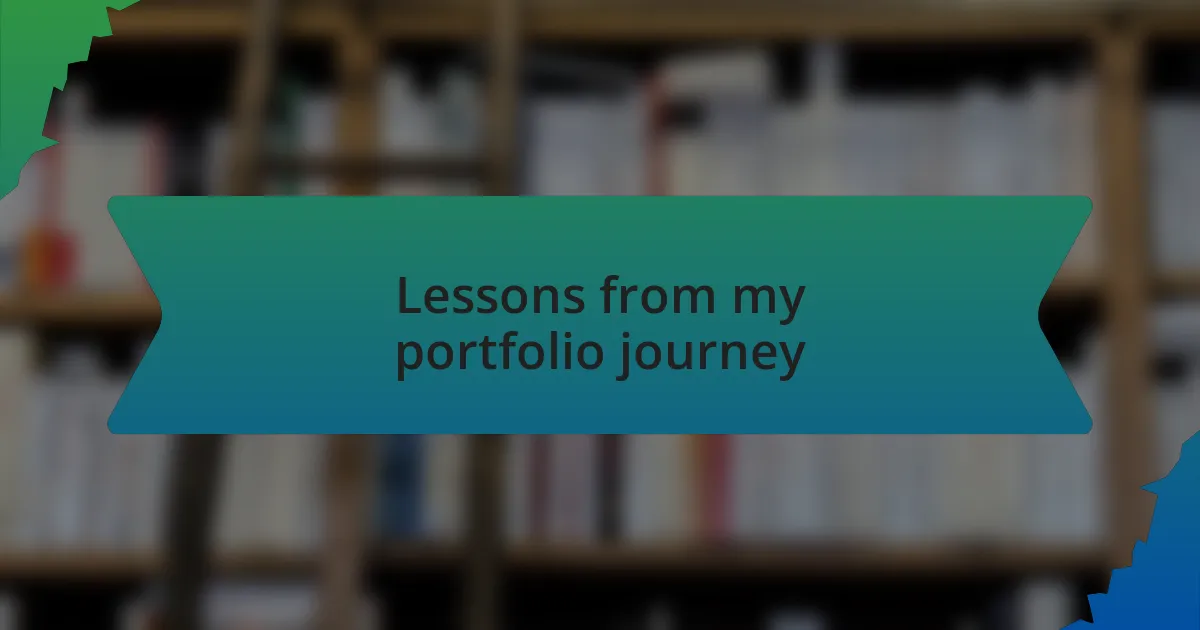
Lessons from my portfolio journey
Building my freelance editing portfolio taught me the importance of adaptability. I once submitted an editing sample to a client who specifically sought a more conversational tone for their project. This experience made me realize that flexibility in my work style can spell the difference between landing a job and missing an opportunity. How often do we box ourselves in, thinking only one style represents our capabilities?
Another significant lesson I learned was the value of showcasing personal projects alongside client work. I decided to include a short story that I edited for myself, which not only demonstrated my skills but also shared my creative voice. This decision sparked discussions with potential clients about my editing philosophy and approachable style. Isn’t it true that our passions can be just as compelling as our professional experiences?
Networking emerged as a crucial element in enhancing my portfolio. I recall attending a local writer’s group, where I forged connections that led to editing gigs. Those interactions taught me that the right relationship can provide a steady stream of opportunities. Isn’t it intriguing how a simple conversation can lead to something as impactful as a new project?